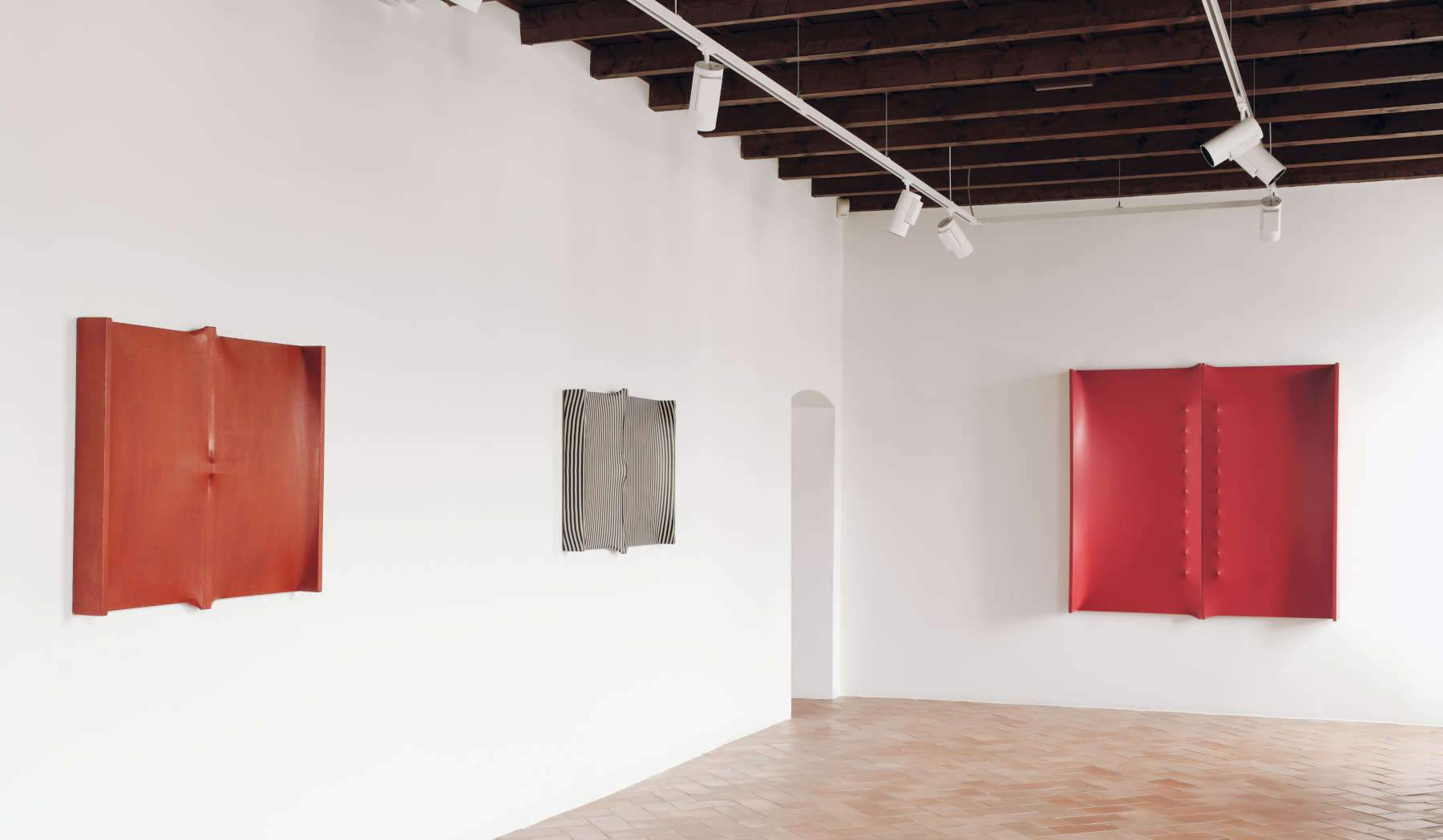In Mendrisio, Switzerland's most comprehensive retrospective dedicated to Enrico Castellani
From March 24 to July 7, 2024, the Mendrisio Museum of Art is hosting a major retrospective exhibition dedicated to Enrico Castellani (Castelmassa, 1930 - Celleno, 2017), one of the great masters of twentieth-century art. With sixty works spanning the artist’s entire career, the exhibition, entitled simply Enrico Castellani and curated by Barbara Paltenghi Malacrida, Francesca Bernasconi, and Federico Sardella in collaboration with the Fondazione Enrico Castellani, aims to offer a journey through his artistic research. The exhibition has the support of the Simplon Bank, the contribution of the Republic and Canton of Ticino, Swisslos Fund, and the media partnership of RSI Rete 2.
Paintings, relief surfaces, works on paper, installations, sculptures, prints and unpublished documents make up the exhibition itinerary, organized chronologically through the museum’s rooms. Each room is dedicated to a specific moment in Castellani’s extraordinary research, allowing visitors to fully immerse themselves in his artistic world. From his first drawings in the 1950s to his last works in aeronautical aluminum, the exhibition aims to offer a complete and in-depth view of Castellani’s artistic practice. Enrico Castellani’s presence on the twentieth-century art scene was not only influential but also extremely charismatic, thanks to his rigorous and constant research around the concepts of space and time, and their unique and innovative representation.
In 1952, Enrico Castellani took an important step in his artistic education by moving to Belgium. Here, after a brief period at the Académie Royale des Beaux-Arts in Brussels, he decided to devote himself to architectural studies at the École nationale supérieure d’architecture et des arts décoratifs de La Cambre, graduating in 1956. Upon his return to Italy, he came into contact with the artist Piero Manzoni, resulting in a deep friendship and a prolific artistic partnership. In 1959, the two founded the magazine “Azimuth” and the almost eponymous gallery “Azimut,” which in just eight months organized as many as thirteen exhibitions, aiming to explore the most innovative artistic trends both in Italy and abroad.
Although Castellani’s early works reflect some influence from abstract expressionism, especially Mark Tobey’s sign painting, he developed a distinctive personal artistic style in the late 1950s. His monochrome canvases, enlivened by carefully studied sequences of reliefs and depressions, captured the attention of the European cultural scene, causing him to emerge as a major figure. Invited to participate in internationally important exhibitions such as Monochrome Malerei (Leverkusen, 1960) and The Responsive Eye (MoMA, 1965), Castellani also achieved a consistent presence at the Venice Biennale, in 1964 and 1966.
In the following years, he continued to develop his distinctive visual alphabet with determination, becoming a landmark in the international art scene. His works are shown in prestigious exhibitions such as Vitalità del negativo nell’arte italiana 1960/70 (Palazzo delle Esposizioni, Rome, 1970), Identité italienne. L’art en Italie depuis 1959 (Centre Georges Pompidou, Paris, 1981) and The Italian Metamorphosis, 1943-1968 (Solomon R. Guggenheim Museum, New York 1994). His career culminated with the award in 2010 of the Praemium Imperiale for painting, the highest artistic honor, given in Tokyo. Enrico Castellani passed away in Celleno in 2017.
The exhibition organized by the Mendrisio Art Museum in collaboration with the Enrico Castellani Foundation represents the first presentation of his work in a Swiss museum and the first retrospective since his passing. The bilingual (Italian/English) catalog features new reproductions of all the works on display and five essays focusing on specific aspects of Castellani’s work and life. Ester Coen analyzes the beginnings of his career and the Azimut/h experience, Paolo Bolpagni the musical aspects of his compositions, Fulvio Irace reflects on the artist’s relationship with architecture, Federico Sardella offers an overview of his artistic production through a geographical prism, and Barbara Paltenghi Malacrida provides an assessment of the critical reception of his work. The appendix includes a new biographical note and an updated exhibition and bibliographical history.
As part of its exhibition program, the Mendrisio Museum of Art presents a series of collateral events each year that aim for interaction with other arts such as music and theater. On the occasion of the exhibition dedicated to Enrico Castellani, the Museum commissioned the creation of a new musical composition by Italian composer Carlo Boccadoro, one of the most important figures in contemporary music. The score, titled Il muro del tempo (The Wall of Time), will be performed in the halls of the Mendrisio Museum of Art by drummer Jeff Ballard and timpanist Lorenzo Malacrida in its premiere on April 27, 2024 at 8:30 p.m. at the Museum.
 |
| In Mendrisio, Switzerland's most comprehensive retrospective dedicated to Enrico Castellani |
Warning: the translation into English of the original Italian article was created using automatic tools. We undertake to review all articles, but we do not guarantee the total absence of inaccuracies in the translation due to the program. You can find the original by clicking on the ITA button. If you find any mistake,please contact us.




























